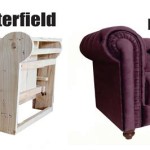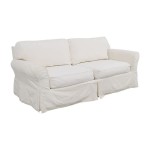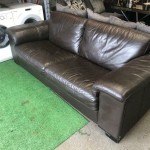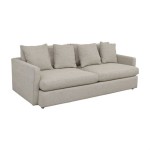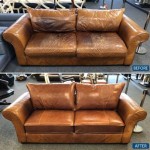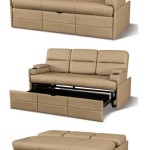Memory Foam Sofa Cushions: A Comprehensive Review
Memory foam sofa cushions have gained significant popularity in recent years, lauded for their ability to conform to the body, alleviate pressure points, and enhance overall seating comfort. This article provides a detailed review of memory foam sofa cushions, exploring their composition, advantages, disadvantages, factors to consider before purchase, and maintenance requirements. The objective is to equip readers with the necessary knowledge to make informed decisions about integrating memory foam cushions into their existing or future seating arrangements.
Memory foam, also known as viscoelastic foam, is a type of polyurethane foam that exhibits both viscous and elastic properties. It was initially developed in the 1960s by NASA to improve the safety of aircraft cushions. Today, memory foam is widely used in numerous applications, including mattresses, pillows, and, of course, sofa cushions. The unique characteristic of memory foam lies in its ability to react to body heat and weight, contouring to the individual's shape and providing customized support. When pressure is removed, the memory foam slowly returns to its original form, hence the term "memory."
The composition of memory foam typically involves a polyurethane base combined with various additives to adjust its density, firmness, and other properties. Different manufacturing processes, such as open-cell or closed-cell construction, also affect the foam's performance. Open-cell memory foam allows for better airflow, promoting breathability and reducing heat retention, while closed-cell foam tends to be denser and retains more heat. The density of the memory foam is measured in pounds per cubic foot (PCF) and is a key indicator of its durability and support. Higher density foam typically lasts longer and provides superior support compared to lower density options.
Key Advantages of Memory Foam Sofa Cushions
Memory foam sofa cushions offer several advantages that make them an appealing option for homeowners seeking enhanced comfort and support.
Pressure Relief: One of the primary benefits of memory foam is its ability to distribute weight evenly across the surface, reducing pressure points that can lead to discomfort and pain. This is particularly beneficial for individuals who spend extended periods sitting or those with conditions such as back pain, arthritis, or sciatica. By conforming to the body's contours, memory foam minimizes stress on joints and muscles, promoting relaxation and improved circulation.
Customized Support: Unlike traditional sofa cushions filled with fiber or down, memory foam adapts to the individual's unique body shape, providing personalized support. This tailored support helps to maintain proper spinal alignment and reduces the risk of slouching or adopting poor posture. The cradling effect of memory foam can also contribute to a feeling of security and comfort, enhancing the overall seating experience.
Motion Isolation: Memory foam excels at isolating motion, meaning that movement on one part of the cushion will not significantly affect other areas. This is especially advantageous in multi-person seating arrangements, as it minimizes disturbances caused by shifting or fidgeting. The motion isolation properties of memory foam contribute to a more peaceful and restful seating experience.
Durability and Longevity: High-density memory foam is known for its durability and longevity. While initial investment may be higher compared to traditional cushion fillings, memory foam cushions tend to retain their shape and support for a longer period, reducing the need for frequent replacements. Proper care and maintenance can further extend the lifespan of memory foam cushions, making them a cost-effective investment in the long run.
Hypoallergenic Properties: Memory foam is naturally resistant to dust mites, mold, and other allergens, making it a suitable option for individuals with allergies or sensitivities. The dense structure of the foam inhibits the growth of these allergens, creating a healthier seating environment. However, it’s important to note that some memory foam products may contain chemical additives that could trigger allergic reactions in sensitive individuals. Choosing CertiPUR-US certified memory foam can help minimize this risk.
Potential Drawbacks of Memory Foam Sofa Cushions
Despite the numerous benefits, memory foam sofa cushions also have potential drawbacks that warrant consideration.
Heat Retention: Traditional memory foam, particularly closed-cell varieties, has a tendency to retain heat, which can lead to discomfort, especially in warmer climates. This is because the dense structure of the foam restricts airflow, preventing heat from dissipating effectively. However, newer memory foam technologies, such as open-cell construction and gel infusions, have been developed to address this issue.
Off-Gassing: Some memory foam products may emit a chemical odor, often referred to as "off-gassing," when first unpacked. This odor is caused by volatile organic compounds (VOCs) released from the foam during the manufacturing process. While the odor typically dissipates within a few days or weeks, it can be bothersome to some individuals. Choosing CertiPUR-US certified memory foam can help minimize the presence of harmful VOCs and reduce the risk of off-gassing.
Firmness and Sinkage: The initial firmness of memory foam can be a deterrent for some individuals. Memory foam requires some time to warm up and conform to the body, which can result in a feeling of stiffness initially. Additionally, the sinking sensation associated with memory foam may not be preferred by everyone. The degree of sinkage depends on the density and thickness of the foam, so it's important to choose a product with appropriate firmness and density to suit individual preferences.
Weight: Memory foam is typically heavier than traditional cushion fillings like fiber or down. This can make it more challenging to move or rearrange sofa cushions, particularly for individuals with limited mobility. The weight of memory foam cushions should be considered, especially if frequent movement or cleaning is required.
Cost: Memory foam sofa cushions generally come at a higher price point compared to traditional cushion fillings. The specialized manufacturing processes and materials used in the production of memory foam contribute to the increased cost. However, the durability and longevity of memory foam cushions can offset the initial investment over time.
Factors to Consider Before Purchasing Memory Foam Sofa Cushions
Before purchasing memory foam sofa cushions, several factors should be carefully considered to ensure a satisfactory outcome.
Density: The density of the memory foam is a crucial factor determining its support, durability, and longevity. Higher density foam (5 PCF or higher) generally provides better support and lasts longer compared to lower density options. However, higher density foam can also be firmer and more expensive. The optimal density depends on individual preferences and the intended use of the cushions.
Firmness: Memory foam cushions are available in a range of firmness levels, from soft to firm. The appropriate firmness level depends on individual preferences and seating habits. Softer cushions provide a more plush and sinking feel, while firmer cushions offer greater support and resistance. Individuals with back pain or other musculoskeletal conditions may benefit from firmer cushions that promote proper spinal alignment.
Thickness: The thickness of the memory foam layer affects the overall comfort and support of the cushion. Thicker cushions generally provide more cushioning and pressure relief, but can also be more expensive. The appropriate thickness depends on the size and construction of the sofa, as well as individual preferences.
Open-Cell vs. Closed-Cell Construction: As previously mentioned, open-cell memory foam allows for better airflow and breathability compared to closed-cell foam. If temperature regulation is a primary concern, choosing open-cell memory foam or memory foam with gel infusions can help minimize heat retention.
Certifications: Look for certifications such as CertiPUR-US, which indicates that the memory foam has been tested for harmful substances and VOC emissions. This certification ensures that the product meets certain safety standards and minimizes the risk of off-gassing and allergic reactions.
Cover Material: The cover material of the memory foam cushion affects its breathability, durability, and ease of cleaning. Common cover materials include cotton, polyester, and blends of the two. Consider choosing a cover material that is durable, breathable, and easy to clean or remove for washing.
Size and Shape: Ensure that the memory foam cushions are appropriately sized and shaped to fit the sofa frame. Measure the existing cushions or the sofa frame to determine the correct dimensions. Consider the overall aesthetic of the sofa and choose cushions that complement the design.
Reviews and Ratings: Read online reviews and ratings from other customers to gain insights into the performance, durability, and comfort of the memory foam cushions. Pay attention to reviews that address specific concerns or questions you may have.
Warranty and Return Policy: Check the warranty and return policy offered by the manufacturer or retailer. A longer warranty indicates confidence in the product's quality and durability. A generous return policy allows you to try the cushions risk-free and return them if they do not meet your expectations.
Budget: Memory foam sofa cushions can range in price from relatively affordable to quite expensive. Determine a budget before starting your search and compare prices from different retailers to find the best value for your money. Consider the long-term benefits of investing in high-quality memory foam cushions that will provide superior comfort and support for years to come.
Maintaining Memory Foam Sofa Cushions
Proper maintenance can extend the lifespan of memory foam sofa cushions and preserve their comfort and support. Regular cleaning and care are essential for keeping the cushions in good condition.
Vacuuming: Vacuum the cushions regularly to remove dust, dirt, and debris. Use a soft brush attachment to avoid damaging the cover material. Vacuuming helps to prevent the buildup of allergens and keeps the cushions looking clean and fresh.
Spot Cleaning: Address spills and stains promptly to prevent them from setting into the memory foam. Use a mild detergent or upholstery cleaner and a clean, damp cloth to gently blot the affected area. Avoid rubbing or scrubbing, as this can damage the foam. Always test the cleaning solution on a hidden area of the cushion first to ensure that it does not cause discoloration or damage.
Ventilation: Regularly ventilate the memory foam cushions to allow them to air out and release any trapped moisture or odors. Remove the cushions from the sofa and place them in a well-ventilated area for several hours. This helps to prevent the growth of mold and mildew.
Sunlight Exposure: Avoid prolonged exposure to direct sunlight, as this can cause the memory foam to deteriorate and lose its elasticity. If the cushions are placed near a window, consider using curtains or blinds to filter the sunlight.
Cushion Rotation: Rotate the cushions periodically to ensure even wear and prevent sagging in specific areas. This helps to distribute the weight evenly and prolong the lifespan of the cushions.
Professional Cleaning: Consider having the memory foam cushions professionally cleaned every year or two to remove deep-seated dirt and stains. Professional cleaners have specialized equipment and cleaning solutions that can effectively clean the cushions without damaging the foam.
By following these maintenance tips, you can keep your memory foam sofa cushions in good condition and enjoy their comfort and support for many years.

Sit Better With Replacement Foam Sofa Cushions Foamite

When To Replace Your Sofa Cushions Foamite

Highly Recommended Square Seat Cushion Chair Pillow In Memory Foam The White Willow

A Review Of La Z Boy S Chair And Sofa Seat Cushions Ottawa Kingston

Expert Advice On Making Your Couch Comfortable Foam
Your Guide To Choosing The Right Cushion Filling Dfs

Luxury Foam Cushions Cut To Size Cushion Guys
Your Guide To Choosing The Right Cushion Filling Dfs

What Foam To Use For Your Sofa Cushions Gb Direct

Fixing Sagging Sofa Cushions Guide Gb Foam Direct
Related Posts

